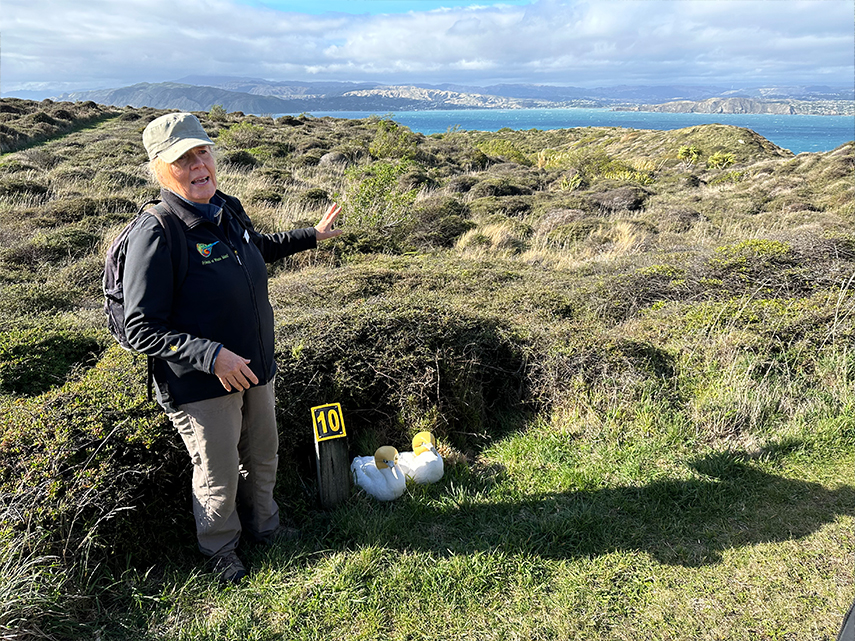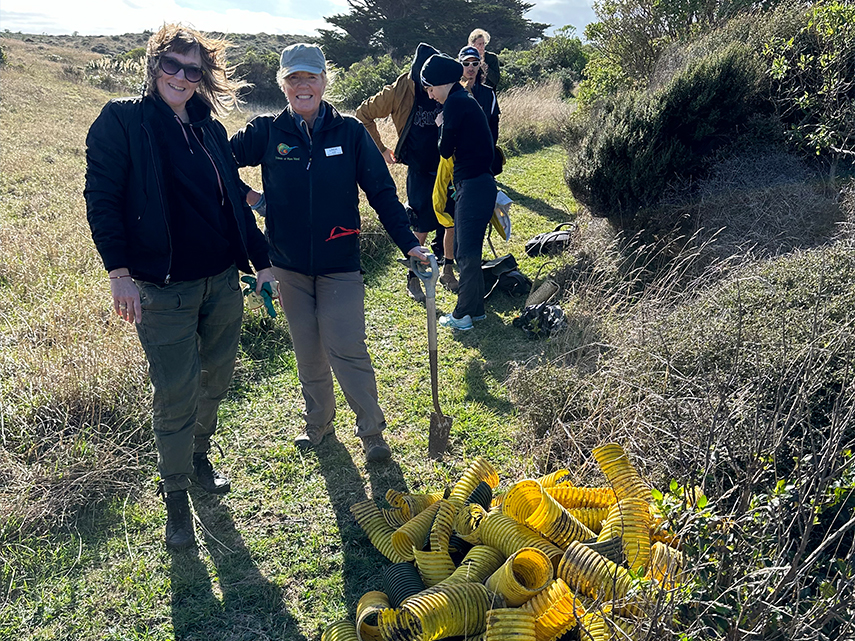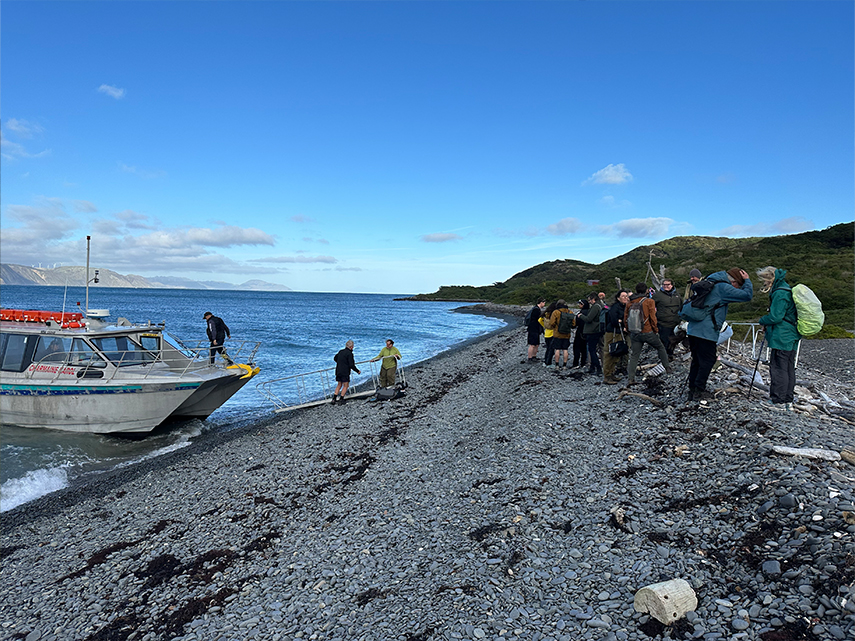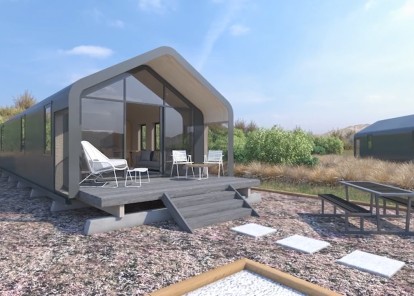Visit to Mana Island

Following the Wellington NZILA conference I participated in an organised working day trip to visit the ecological restoration project on Mana Island.
The flat toped 217 hectare island lies 2.5km offshore from Porirua, on Wellingtons west coast. I was particularly intrigued with this wildly exposed place as an ancestor of mine worked as a whaler on the island in the 1840’s.
The island was initially named after Kupe the earliest explorer “Te Mana o Kupe ki Aotearoa” who also named the northern plateau “Matakitaki” because of its wide views of what looks like a big bay with the islands of the Marlborough sounds to the south and Kapiti to the north.
Because of its prominence Mana Island has been the focus for a lot of human activity especially in the 19th century with a strategic pa for the migrating Ngati Toa, early whaling stations and was then the forest was cleared for pastoral farming for 160 years until 1987 when it was taken over by Department of Conservation (DOC).
Formed in 1998 Friends of Mana Island (FOMI) are a charitable trust that supports DOC in restoring the islands indigenous vegetation and nurtures the breeding of native fauna. The group has about 250 volunteers and current president is landscape architect Linda Kirkmeister who led our visit.
After an exhilarating ride on a deep hulled aluminum catamaran through choppy waters we were hauled up onto the beach. Our party consisted of landscape architects from around the country and in addition from conference guest speakers Marina Cervera from Barcelona, Claire Martin and Georgina Reid from Australia. From the base camp we were equipped with cutting devices and instructed on stripping plastic plant surrounds off the base of bulging trees. Climbing up the narrow grass tracks we were immersed within a 4 to 6m high canopy of shrub and small trees that had have been planted by volunteers over 20 years and remarkably now covers most of the island.
We spent several hours clambering around the undergrowth doing our bit to release trees of the offending yellow plastic constrictions. Amazingly with fingers intact we were gathered and led on by Linda and a couple of FOMI guides to walk a loop track around the island. Along the way Linda pointed out rare plants such as the prickly “leafless bush lawyer” and the forlorn concrete gannets that have been placed unsuccessively (so far) to entice gannets to colonise the cliffs. We hoped to see some illusive Takahe but pointedly only encountered their droppings.
Restoration and regeneration of the island seems to be proceeding well with the island is going back to some sort of “natural state” although beware human intervention is always present in various forms from planted wetlands, tracks, signs, names and even small camouflaged buildings. Though the volunteers appear to really get a lot of satisfaction from their association with and time on the island. And for a windy day in early winter we did too.
There are strict controls on entry to Mana Island and a pier was recently removed so that boats could not randomly visit. An authorised charter boat catamaran runs in the summer guided day trips to the island see https://www.gomana.co.nz.




Published
29 May, 2024
Author
Garth Falconer
More articles Pitopito kōrero
Practice Tikanga
At Reset, we offer a broad scope of services within the specialist areas of Urban Design and Landscape Architecture. We also actively engage in research and have contributed two published books on the history of design in New Zealand.


